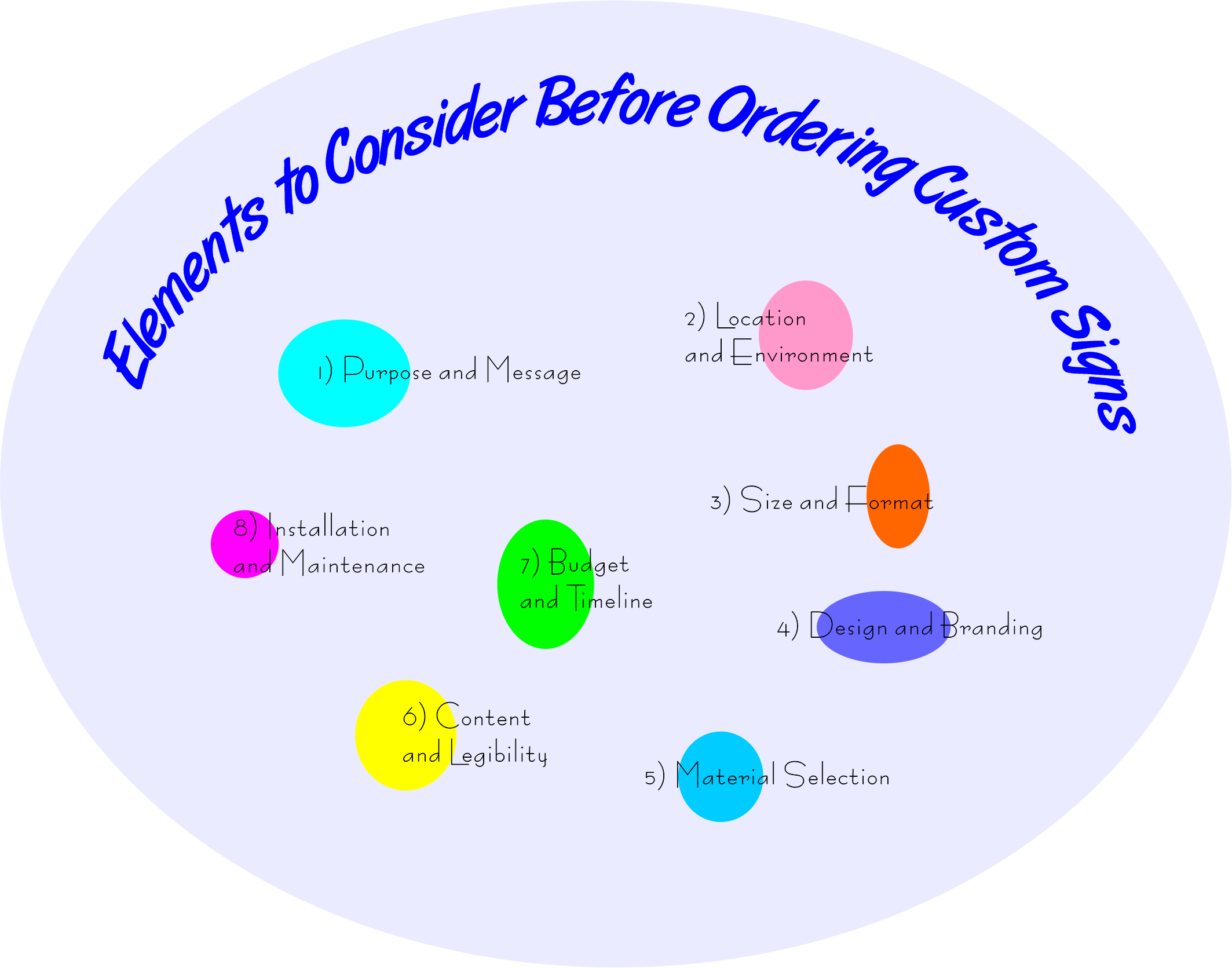A custom sign captures attention, tells your story, and makes a lasting impression. Imagine the perfect sign that effortlessly reflects your brand, guides your customers, or adds a touch of personality to your space. Before you take the exciting plunge into ordering your very own custom sign, let’s explore the key elements you should consider. We’ll unravel the secrets to creating a sign that’s not just visually stunning, but also strategically designed to convey your message with style. Get ready to embark on a journey of creativity, as we delve into the world of custom signs and unlock the secrets to making your vision a reality. So, grab a cup of inspiration and join us as we discover the essential factors that will transform your sign dreams into captivating works of art!
𝟏) 𝐏𝐮𝐫𝐩𝐨𝐬𝐞 𝐚𝐧𝐝 𝐌𝐞𝐬𝐬𝐚𝐠𝐞:
Begin by clearly defining the purpose of your sign. Are you promoting a business, providing directions, or announcing an event? Determine the primary message you want to convey, as this will influence the design, size, and content of your sign.
𝟐) 𝐋𝐨𝐜𝐚𝐭𝐢𝐨𝐧 𝐚𝐧𝐝 𝐄𝐧𝐯𝐢𝐫𝐨𝐧𝐦𝐞𝐧𝐭:
Think about where your sign will be placed. Consider the surroundings, lighting conditions, and viewing distance. Indoor and outdoor signs have different requirements, so be mindful of factors like weather resistance and visibility when selecting materials and colors.
𝟑) 𝐒𝐢𝐳𝐞 𝐚𝐧𝐝 𝐅𝐨𝐫𝐦𝐚𝐭:
Determine the ideal size of your sign based on its intended location and viewing distance. A sign that is too small may go unnoticed, while one that is too large can overpower the space. Additionally, consider the format—whether you prefer a rectangular sign, a banner, a freestanding display, or any other shape that suits your needs.
𝟒) 𝐃𝐞𝐬𝐢𝐠𝐧 𝐚𝐧𝐝 𝐁𝐫𝐚𝐧𝐝𝐢𝐧𝐠:
Your sign should reflect your brand identity and be visually appealing. Consider using your logo, brand colors, and fonts to create a cohesive look. Think about the overall style—whether it’s modern, vintage, minimalist, or something else—to ensure it aligns with your brand and the message you want to convey.
5) Material Selection:
Choose the right materials for your sign based on its purpose and location. Common options include vinyl, metal, acrylic, wood, and fabric. Each material has its own characteristics in terms of durability, weather resistance, and aesthetic appeal, so select one that suits your specific requirements.
6) Content and Legibility:
Pay attention to the readability of your sign. Use fonts and font sizes that are easy to read from a distance. Keep the content concise and use bullet points or simple graphics when possible. Remember, a cluttered sign can make it difficult for viewers to understand the message quickly.
7) Budget and Timeline:
Determine your budget for the custom sign project. The cost will depend on factors such as size, material, complexity, and quantity. Additionally, consider your timeline and communicate it to the sign manufacturer to ensure they can meet your deadline.
8) Installation and Maintenance:
Think about how the sign will be installed and maintained. Some signs may require professional installation, while others can be easily mounted by yourself. Consider factors like durability, cleaning requirements, and the need for any additional accessories like lighting or stands.
By carefully considering these elements before ordering your custom sign, you can ensure that you get a high-quality, visually appealing, and effective sign that meets your specific needs. Don’t hesitate to communicate your requirements clearly to the sign manufacturer, as they can provide valuable guidance and expertise throughout the process.







